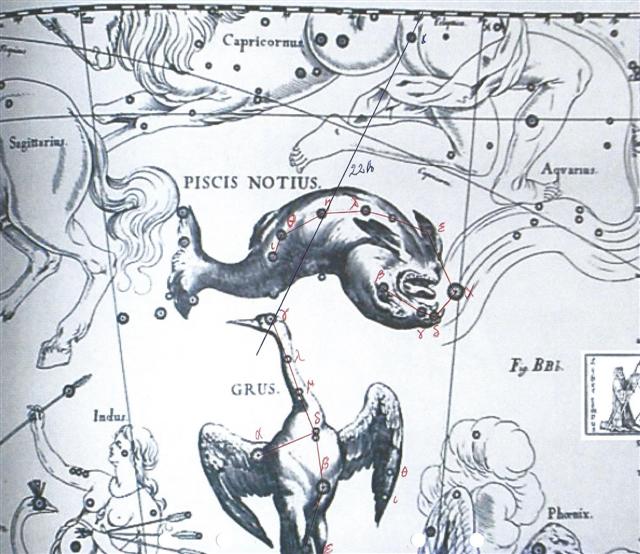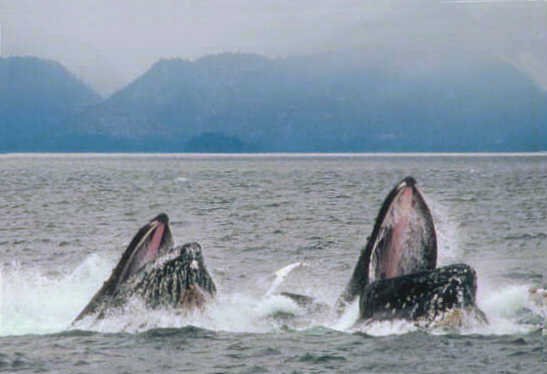If Metoro saw ٭OCTO(8)BER 1 at the first rakau in the text, then the Octo(8)pus (te Heke) ought to have been at ٭JULY 31 (212).
Earlier I guessed Ca1-26 illustrated the position of Polaris at the north pole with Sheratan in the following day, and similarly Polaris at the end of side a with Sheratan at the beginning of side b. 472 / octo = 59. Another possibility, though, is that the glyph was referring to Thuban, to the ancient Pole star at the other side of the sky, at the tail of the Dragon - like the final arm of the Great Octopus. ... Earlier, around 2500 B.C., the pole star was Thuban (α Draconis) ... ... The shell Rumia became his dwelling place, the overarching dome of the sky. It was a confined sky enclosing the world just forming, and in its deep and abiding night the lad attained manhood. There were no Sun, Moon, or stars and only one other living creature, the Great Octopus. The sun was held down close above the slowly evolving earth by the Great Octopus, Tumu-rai-fenua, Foundation of Heaven and Earth, who lived in the primeval waters on which the earth floated. One of his arms was to the north, one to the south, one to the east and another to the west. With these vast arms he held the sky, the shell Rumia, close down against the earth ... Instead of a view perceiving the northern spring stars Polaris / Sheratan, Alrisha, and Hamal, the text could have aimed at a description of the southern spring with Muphrid / Thuban, κ Virginis, and Arcturus - and with time to be counted down in ancient fashion instead of up (cfr Asellus Tertius, Secundus, and Primus). This countdown could have come to its end at the midnight culmination of Fomalhaut (α Piscis Austrinus):
Asellus Primus was a name for θ Bootis. ... The form of the letter θ suggests a midline ('waist'), although the origin of θ is the Phoenician tēth which means 'wheel'. This in turn could have originated from a glyph named 'good' which in Egypt was nfr ... Metoro saw the glyph (Ca2-8) as tara tua - which I think could be translated as the point at the back (tua) similar to the northern spring tara. There were no longer any hands visible, according to the following glyph (Ca2-9), which ought to mean the heliacal stars as viewed in the north were in autumn.
"Here in Fakaofo old Sina had a daughter called Sina, and ten sons. The names of these sons were Ten to One, that is to say Ulu, Iva, Valu, Fitu, Ono, Lima, Fa, Tolu, Lua and Tasi. When young Sina was a small girl she was taken away to Fiti by a bad person. Her mother grieved long for Sina, therefore one day the ten sons said that they would build canoes and go in search of her. Each son went into the bush to fell his tree, and as Ulu went along he came across two persons fighting. Their names were Sinota and Te Gata (that is 'Sea-snake'), and just as Ulu came along Sea-snake had got Sinota by the throat. Cried Sinota, 'Help me, Ulu!' But Sea-snake said angrily to Ulu, 'Do not interfere, you owl', and Ulu was frightened and went away. Soon the next brother, Iva, came that way, and Sinota asked him for his help, but Iva also was afraid of Sea-snake. Then came Valu; he also ran away. Each brother came in turn, and was afraid of Sea-snake, until Tasi the last arrived. Sinota was nearly dead, and Tasi only just heard his cry. He did not wait for Sea-snake's words, he jumped and cut off his head. The fight was finished. When Sinota had thanked Tasi for saving his life he helped him build his canoe. He showed him where the best tree stood, then he called to all the insects to help him cut it out. He got the spiders to make its sail. All of Tasi's brothers had already made their canoes, and by the time Tasi's was finished they had set sail and were nearly out of sight. He sailed after them, came to Lua's canoe, and said a word which Sinota had taught him. This word made Lua's canoe stop sailing. Tasi passed it. He came to the canoes of all his brothers, said his word, passed them. Thus Tasi arrived first at his sister's house in Fiti. 'I and my brothers have come to take you home to see your mother who is old and sick.' Sina became very frightened. She was wife to that bad person who had seized her from her home. This bad person was a terrible cannibal, his name was Saipuniana. Said Sina: 'This man will not let me leave. He will kill you. He watches me.' Said Tasi: 'I know a trick. In the middle of the night you will tell the husband you are very hot and want to go outside to get cool. If he suspects you, tie a piece of cord around your waist and leave the end with him.' Sina did this. Then she tied the cord to a maile tree and ran away with Tasi to his canoe. Saipuniana waited. He pulled the string and called to Sina. He heard the noise of the tree where she was sitting and went to sleep again. Later he pulled again, pulled hard, and the branch came off. Bad was his heart with anger when that person knew he had been tricked. When daylight came he saw a canoe far off and sailing from the land. Saipuniana called on the Mist to come and help him. With the help of the Mist that person could walk on the sea. He walked after that canoe. When Tasi saw Saipuniana coming up he said his word that called the rain; a heavy squall of rain came down to make Saipuniana cold. Therefore when Saipuniana caught up with them he was so cold that could only crawl into the bottom of the canoe. There Tasi rolled him in a sleeping mat. When Saipuniana was resting, Tasi sewed up the mat. Then he tied his achor stone to it. Saipuniana was waking up. Said Tasi, 'Let me move you. The canoe is leaking just there. You must not get wet.' So he lifted him; but he did not put him down in the canoe again, he tossed him overboard. Thus it was finished with Saipuniana. All these matters made Tasi's journey slow, and so his brothers passed him on the way, all reached Fakaofo before him. Their mother was waiting for them on the reef, she asked each brother if Sina was in his canoe. When all those brothers had come in, from Ulu to Lua, old Sina was going to drown herself from grief, but she waited for one more canoe - that of Tasi the last. Then she found her daughter safe with Tasi. Old Sina ordered a very great feast of rejoicing for the coming home of young Sina and she said to Tasi: 'Now I know which is the first of all my sons. In future you will be the one we say first and the others will come after you.' So counting was turned around, and we count: tasi, lua, tolu, fa, lima, ono, fitu, valu, iva, sefulu." (Antony Alpers, Legends of the South Seas.) |
|||||||||||||||||||||||||||||||||||||||||||||||||||||||||||||||||||||||||||||||||||||||||||||||||||||||||||||||||||||||||||||||||||||||||||||||||||||||||||||||













